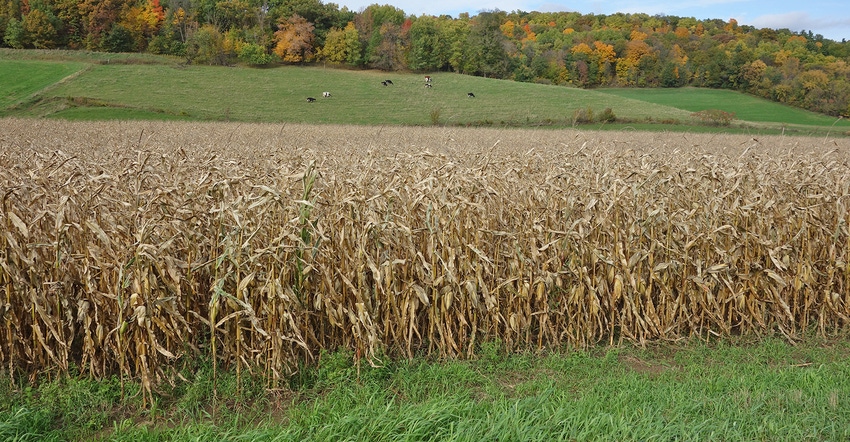October 24, 2018

By Micheal Travis
Variety, they say, is the spice of life. It lends beauty to field and forest landscapes. Variety makes work, food and life more enjoyable.
Diversity, another term for variety, is key to productivity both in natural and agricultural environments. Let’s consider several benefits of diversity and how to add it to your farm.
Higher yields
It is well-known that repeatedly growing crops in the same field leads to a phenomenon called “yield drag.” This understanding goes back at least 2,000 years, when crop rotation was recorded to improve yield. While our ancestors may not have known the whys, they understood that it worked. Research by the University of Wisconsin confirms the value of rotation in modern field crops. When soybeans are rotated into a continuous corn system, corn yield increases. Furthermore, it was found that adding a third crop into the rotation resulted in an even greater yield bump to the corn — as well as to the soybeans.
Intercropping is another tool to increase diversity in a field. With this strategy, which has also been practiced for millennia, multiple crops are grown together in the same field. Two or more crops are planted, either in alternating rows or mixed together. This may seem rather impossible for field crop production; however, Canadian and European farmers are pioneering modern intercropping methods. The farmers plant and harvest a mixed crop together (for example, oats and peas, or barley and flax). Following harvest, innovative equipment separates the different sized seeds in preparation for market. Research trials, as well as field data, show a proportional yield increase of 20% or more when comparing intercrop versus monocrop methods.
Fewer pests
Before the modern use of pesticides, diverse crop rotations were the method of choice for dealing with weed, insect and disease issues. Buckwheat and rye are known for their ability to restore a weed-infested field back to productivity. Insect and disease cycles are disrupted through the diversity of rotation. While a single-year break in rotation helps, multiple-year rotations are crucial for many crops. High-value Wisconsin crops such as potatoes and horseradish are grown under strict rotational management because, despite modern chemical pesticides, agronomic management is still the most powerful tool against yield loss from pest pressure.
Intercropping, mentioned previously, has also proved to be an effective tactic against weeds and insects. By planting two crops with different growth habits together, gaps are filled and weed growth is curtailed. Mixed crops have been shown to hamper insects from attacking a crop, apparently through masking the smell of targeted plants.
Healthier soil
The result of long-term diversity in farming is the same as in the natural environment: healthy plants and soil. As already mentioned, this is not new or innovative. A first century B.C. Roman agriculturist noted, “Some crops are to be planted not so much for the immediate yield, [but] with the view to the following year, since when cut down and left they improve the soil.”
The modern soil health movement provides a renewed focus on the value and methods of building productive soil. We have discovered that the thousands of species of microorganisms living in a handful of soil can achieve healthy balance when diversity is encouraged above the surface. Furthermore, we have learned that healthy soil stimulates bacterial and fungal partnerships with plants. These symbiotic relationships promote a plant’s disease resistance, nutrient capturing ability and overall resilience against many environmental challenges until harvest.
As you plan for the coming growing season, remember the value of diversity. Experiment with production changes. Start small; you may encounter some failures, but no doubt you will discover methods for increasing health and yield on your farm. As you find what works, scale it up. And remember, enjoy the spice that variety brings!
Travis is the Extension agriculture and natural resources educator in Pepin County, Wis.
You May Also Like




